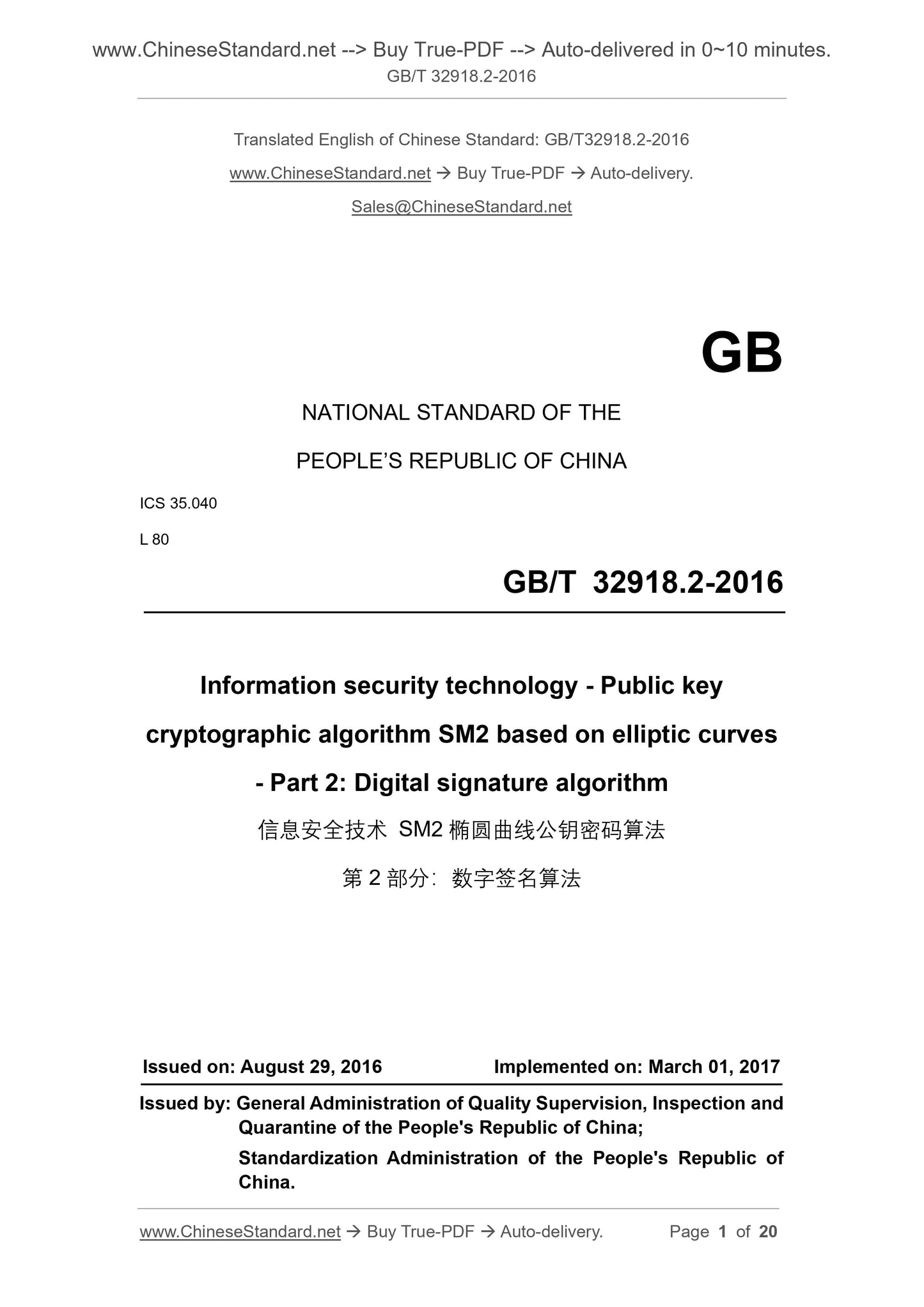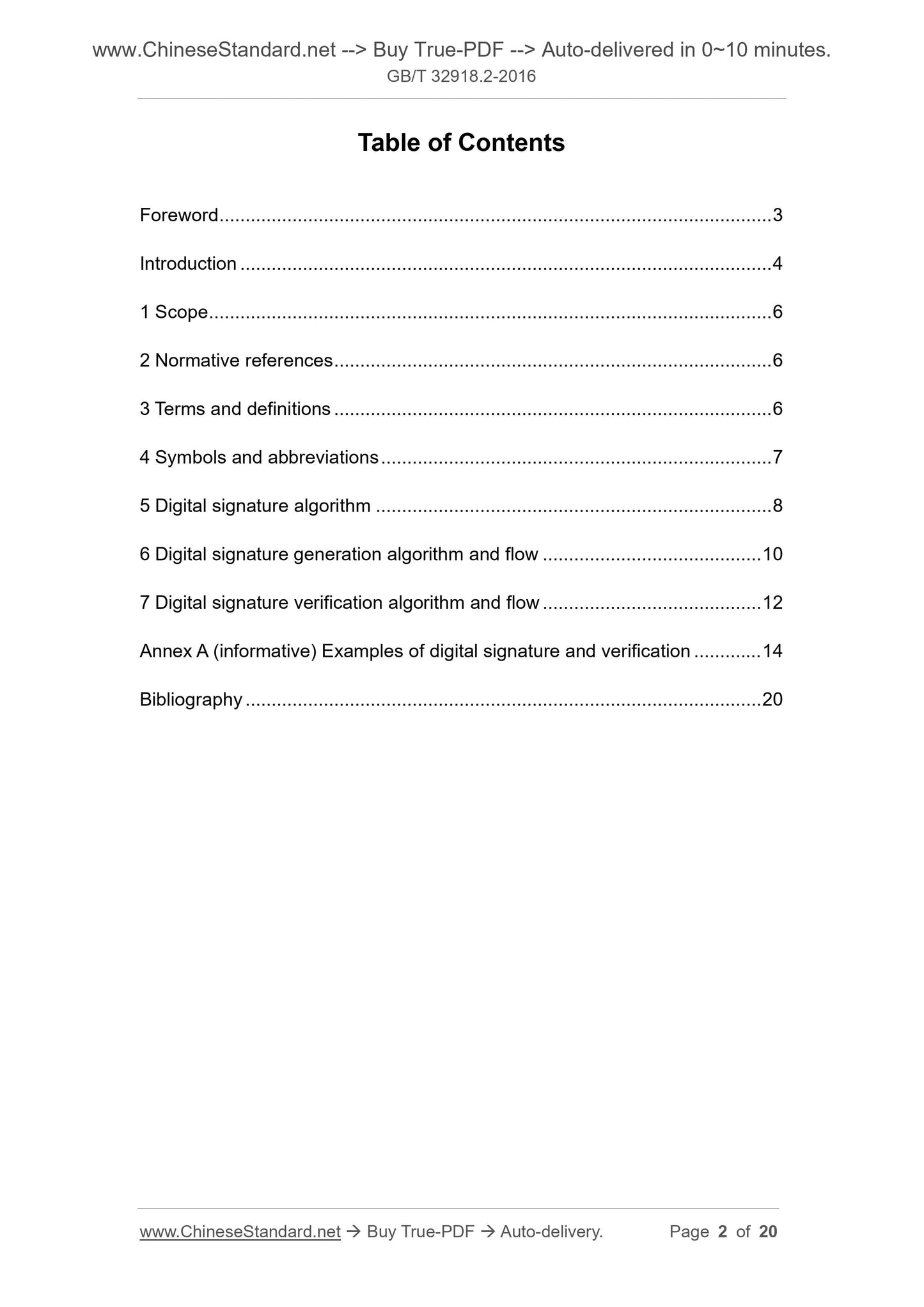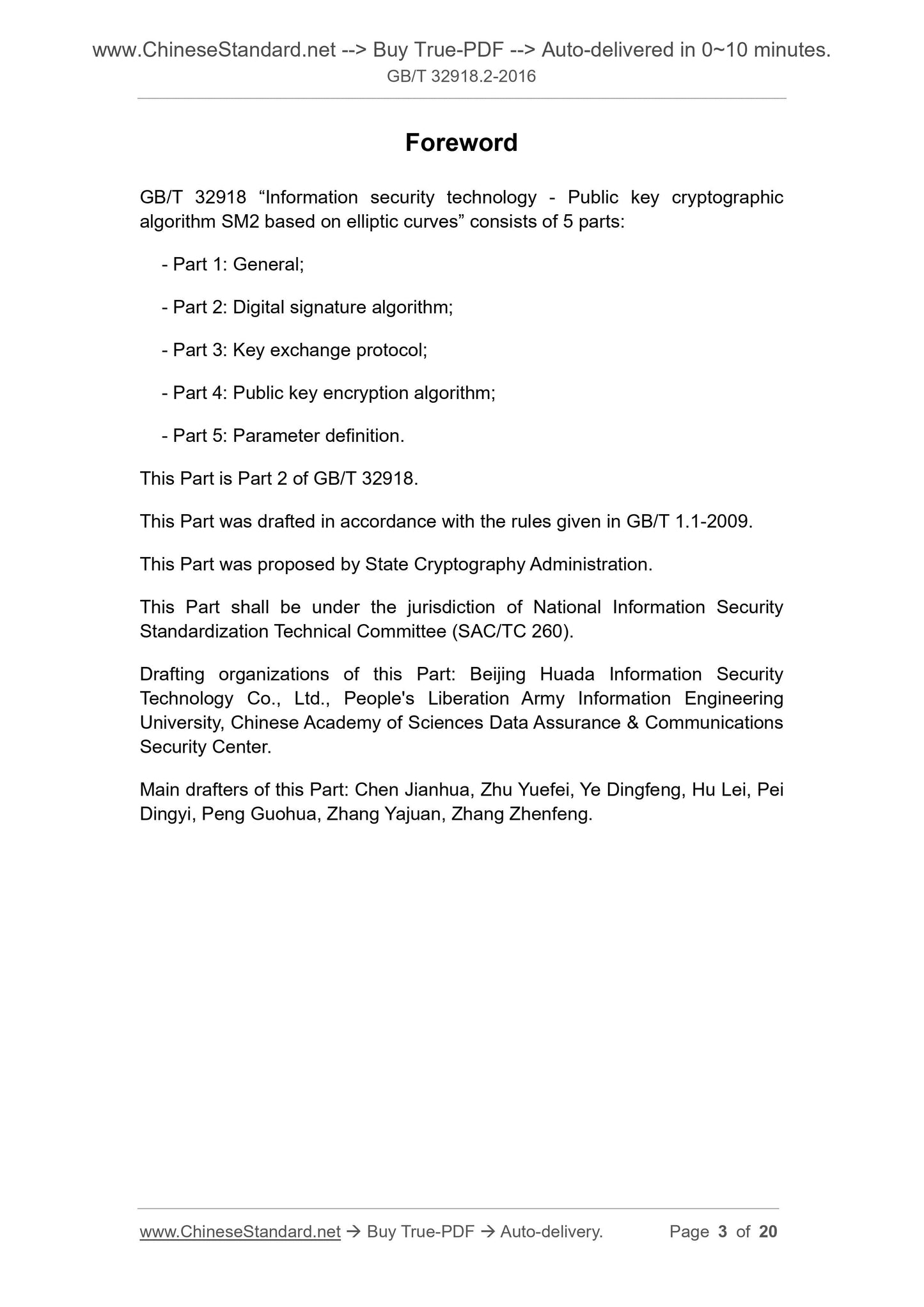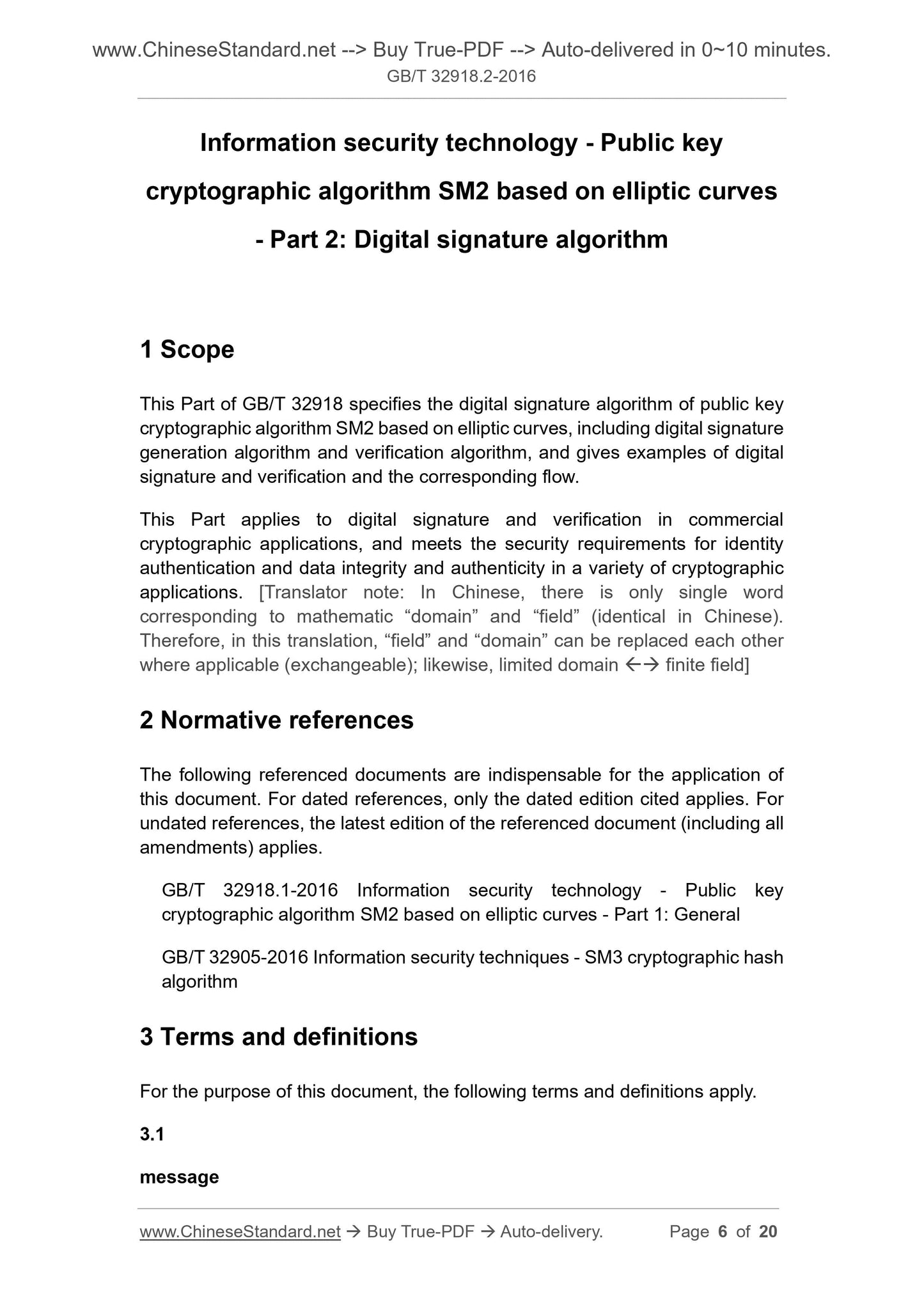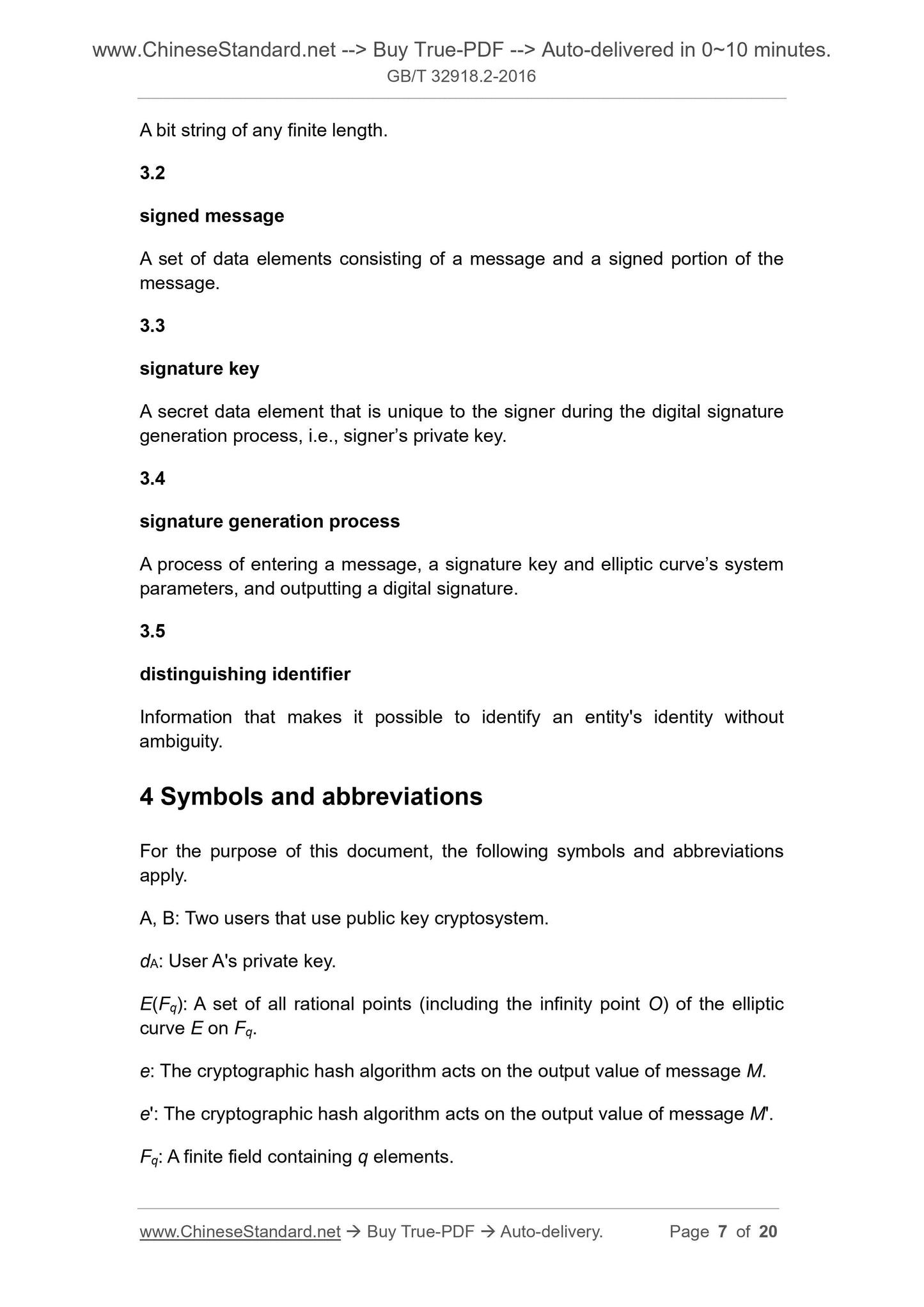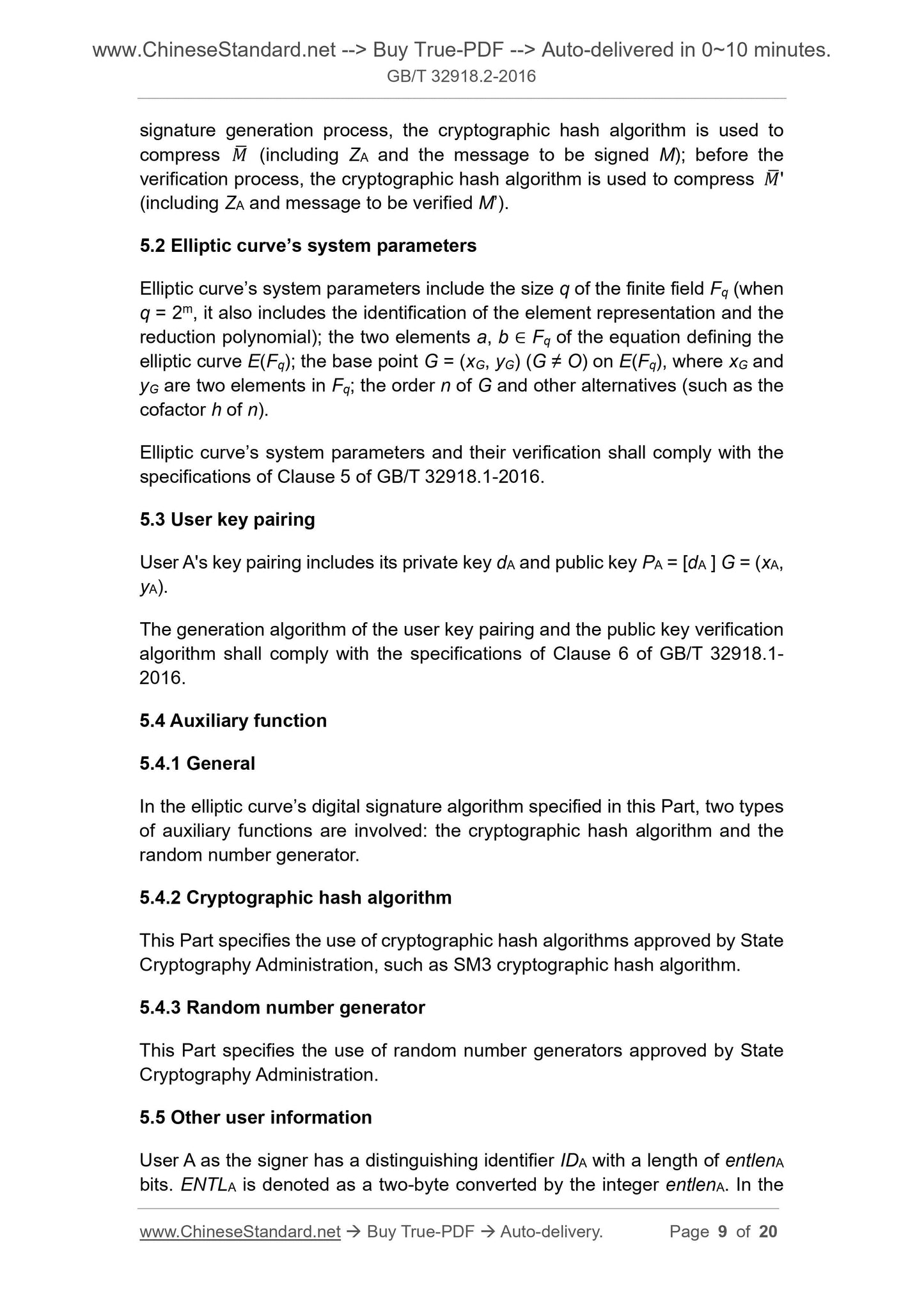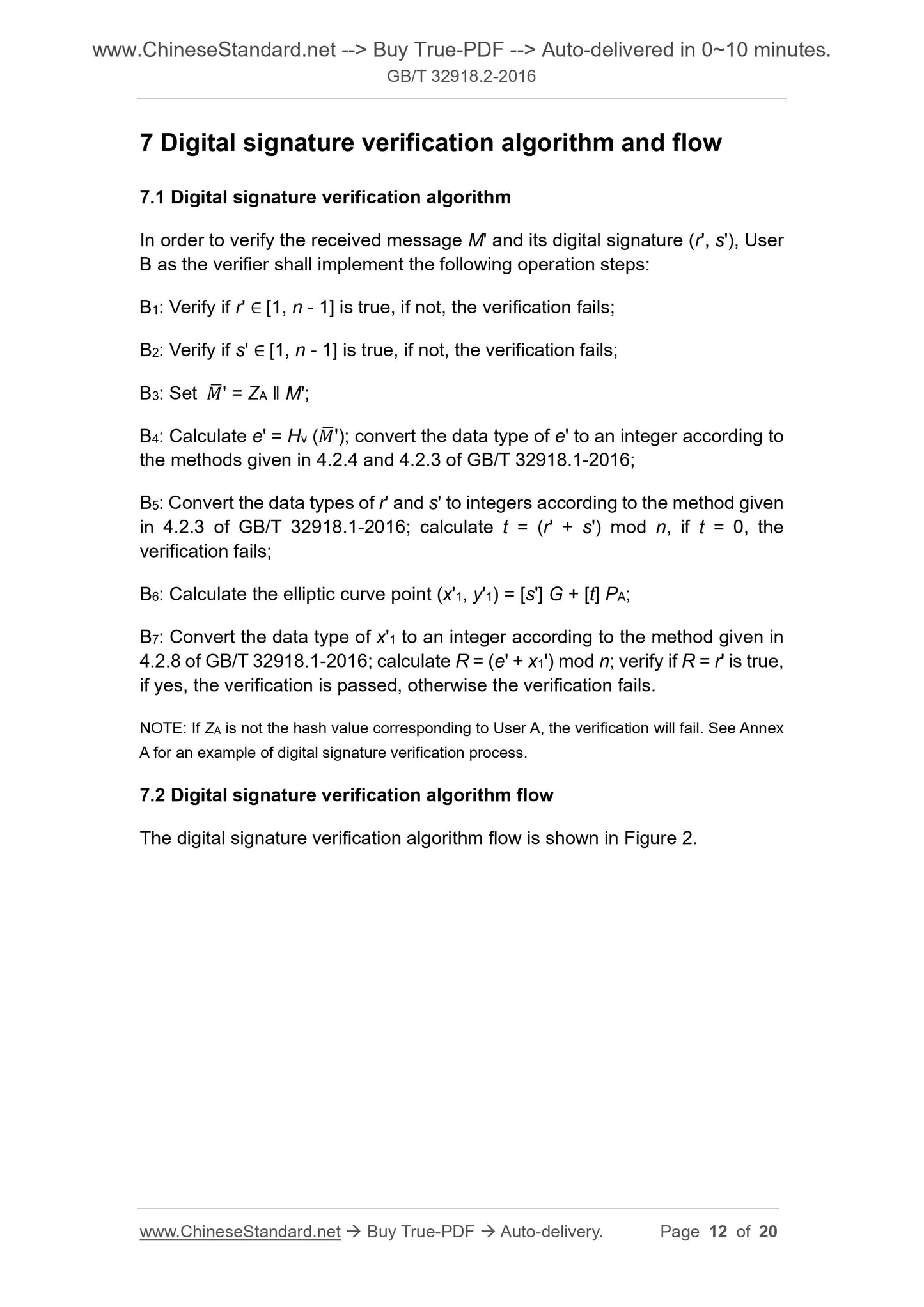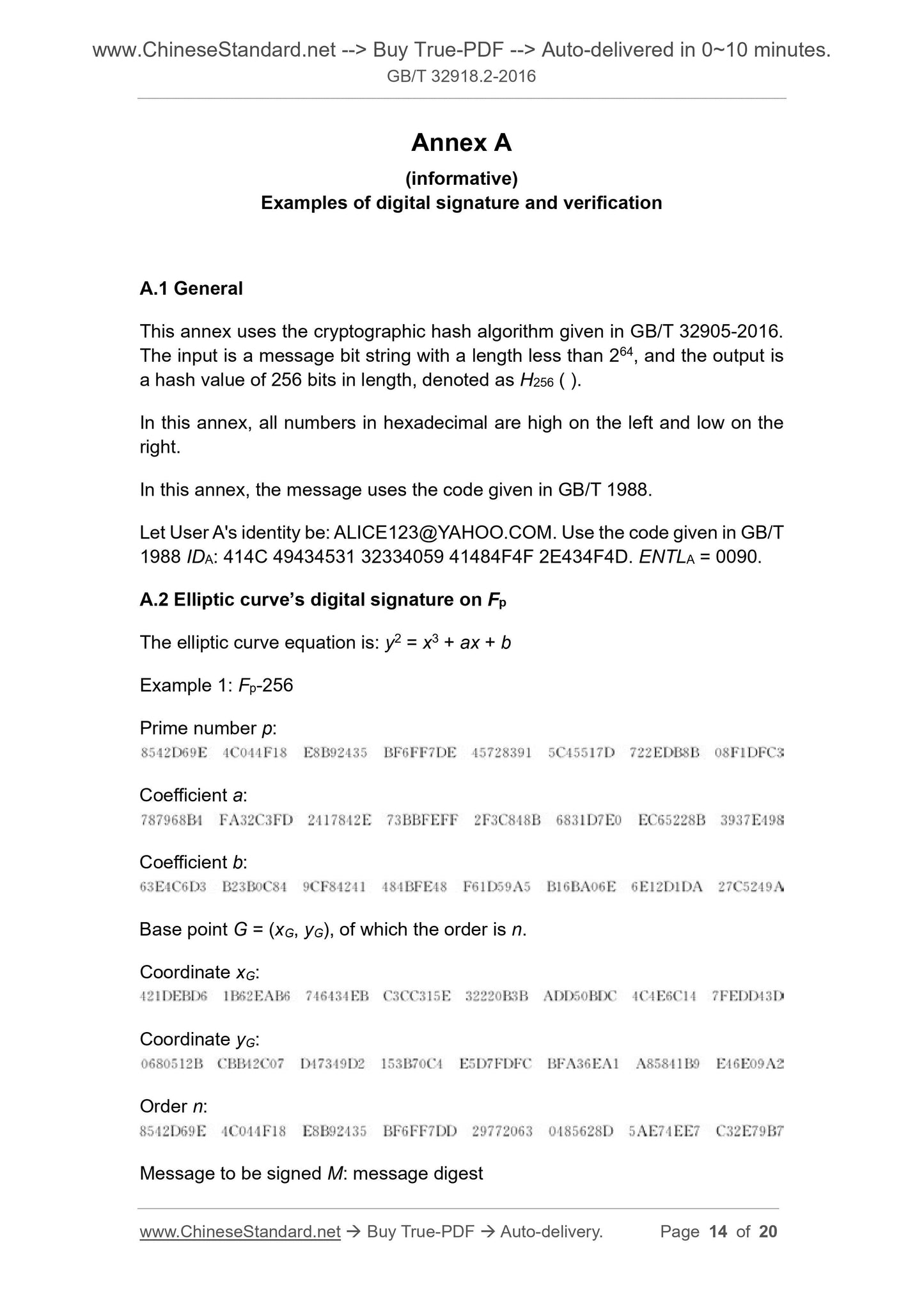1
/
of
8
www.ChineseStandard.us -- Field Test Asia Pte. Ltd.
GB/T 32918.2-2016 English PDF (GB/T32918.2-2016)
GB/T 32918.2-2016 English PDF (GB/T32918.2-2016)
Regular price
$145.00
Regular price
Sale price
$145.00
Unit price
/
per
Shipping calculated at checkout.
Couldn't load pickup availability
GB/T 32918.2-2016: Information security technology - Public key cryptographic algorithm SM2 based on elliptic curves - Part 2: Digital signature algorithm
Delivery: 9 seconds. Download (and Email) true-PDF + Invoice.Get Quotation: Click GB/T 32918.2-2016 (Self-service in 1-minute)
Newer / historical versions: GB/T 32918.2-2016
Preview True-PDF
Scope
This Part of GB/T 32918 specifies the digital signature algorithm of public keycryptographic algorithm SM2 based on elliptic curves, including digital signature
generation algorithm and verification algorithm, and gives examples of digital
signature and verification and the corresponding flow.
This Part applies to digital signature and verification in commercial
cryptographic applications, and meets the security requirements for identity
authentication and data integrity and authenticity in a variety of cryptographic
applications. [Translator note. In Chinese, there is only single word
corresponding to mathematic “domain” and “field” (identical in Chinese).
Therefore, in this translation, “field” and “domain” can be replaced each other
where applicable (exchangeable); likewise, limited domain finite field]
Basic Data
| Standard ID | GB/T 32918.2-2016 (GB/T32918.2-2016) |
| Description (Translated English) | Information security technology - Public key cryptographic algorithm SM2 based on elliptic curves - Part 2: Digital signature algorithm |
| Sector / Industry | National Standard (Recommended) |
| Classification of Chinese Standard | L80 |
| Word Count Estimation | 14,193 |
| Date of Issue | 2016-08-29 |
| Date of Implementation | 2017-03-01 |
| Regulation (derived from) | National Standard Announcement 2016 No.14 |
| Issuing agency(ies) | General Administration of Quality Supervision, Inspection and Quarantine of the People's Republic of China, Standardization Administration of the People's Republic of China |
Share
